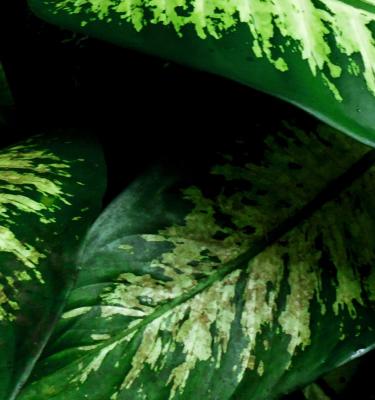

How to grow & care for dieffenbachia
Dieffenbachia (Dieffenbachia spp.), also known as Dumb Cane or Leopard Lily, are fast-growing tropical plants popular as house plants thanks to their big, oval shaped leaves with white/yellow markings on them. The common name ‘Dumb Cane’ comes from the plants toxic sap, if consumed they have the potential to cause speaking and breathing difficulties - so please don’t eat them and keep them out of reach of children and pets.
Dieffenbachia prefer a bright, warm spot indoors with indirect sunlight. If you live in a frost free climate they can be grown outdoors in a warm, shaded, protected spot. Dieffenbachia also like their soil or potting mix to be constantly moist.
As your Dieffenbachia grows you can increase its pot size - it can grow up to a metre or more tall and bring a really lush, tropical vibe to a room or space when allowed to grow tall.
Top 5 steps to growing dieffenbachia
- Dieffenbachia prefer a spot with medium to bright indirect light - direct sun can burn their leaves.
- Use a premium, like Scotts Osmocote Premium Potting Mix for Indoor Plants to give your plant the best start possible
- Dieffenbachia like a moist soil or potting mix, with good drainage. Tip out excess water from coverpots or saucers so the potting mix is never waterlogged or soggy.
- Fertilise dieffenbachia with an indoor plant fertiliser like Scotts Osmocote Pour+Feed for Indoor Plants once a month during spring, summer and early autumn, to encourage strong healthy growth.
- Dieffenbachia’s large leaves collect dust and debris easily. While wearing gloves, wipe them clean with a damp cloth every month so they can function properly.
Shopping List
- A dieffenbachia plant
- If growing in a pot
- A potting mix scoop or garden trowel
- Defender Pyrethrum Insect Spray
Growing in a pot
Choose a pot for your dieffenbachia that’s no larger than 2 times the size of the original nursery pot - make sure it has drainage holes or use a black plastic pot that sits snugly inside a cover-pot or cache pot (pot with no holes).
Half fill your pot with Scotts Osmocote Premium Potting Mix for Indoor Plants and gently remove the dieffenbachia from the nursery pot and position it into the potting mix, backfill around root ball with more potting mix so that the potting mix is level with, or slightly below, the top of the pot.
Water your new dieffenbachia in well and tip out any excess water from the base of the coverpot or saucer (if using). Dieffenbachia prefer a moist, but free draining soil - so don’t let water pool in the base of coverpots or in saucers as they’ll quickly rot if their potting mix remains soggy or waterlogged.
Fertilising & Care
Fertilise dieffenbachia monthly in spring, summer and early autumn with an indoor plant fertiliser to encourage new growth. Use Scotts Osmocote Pour+Feed for Indoor Plants - this is a simple to use ‘measure and pour’ feed which contains the right balance of nutrients. If you’d prefer a longer term fertilising product, with less applications, apply Scotts Osmocote Controlled Release Fertiliser for Indoor Plants in early spring and again in early autumn - this product feeds for up to 6 months.
Keep dieffenbachia plants away from strong drafts of cold air (eg. air-conditioning vents) and if your air is particularly dry you could increase the humidity around your plant with either a humidifier or by grouping it together with other plants to create a more humid microclimate.
Remove any dead or damaged leaves at their base with scissors to promote new growth.
Yellowing leaves on your dieffenbachia could be a sign of too much or not enough water - poke the soil with your finger before watering to ensure the top 1-3cm are dry before watering again. And make sure there is no water pooled in the coverpot or saucer.
Dieffenbachia will benefit from an annual repot in early spring. Choose the next size up pot to encourage new root and shoot growth if you’d like your plant to grow larger and make sure you use a premium potting mix like Scotts Osmocote Premium Potting Mix.
WARNING - these plants are toxic to pets or humans if consumed.
Pests & Diseases
Dieffenbachia are pretty pest and disease free! Spider mites are possibly pests, and if you spot signs of them that include spider-like webbing on your leaves - use Defender Pyrethrum Insect Spray to control them if needed.



